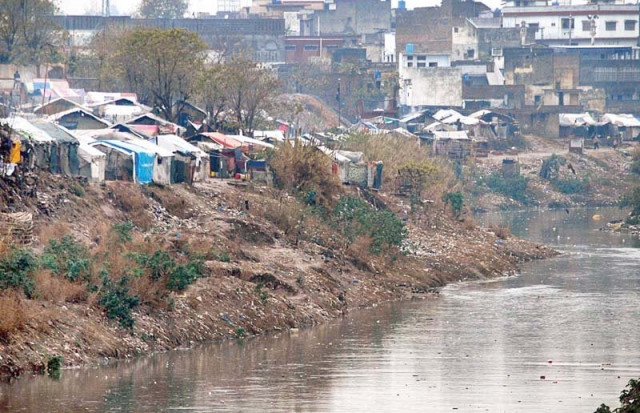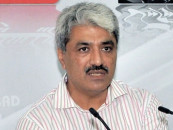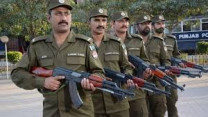Nullah Leh becomes a bane for garrison city
Citizens brave pollution, flood ravages caused by fetid drain

Rawalpindi’s Nullah Leh has become a significant threat to the city with the worst pollution and ravages of monsoon floods.
The much-needed mega project of Leh Expressway and Flood Channel to build a new route for transportation between the two cities, transfer the open sewage outside the city via secure trenches, and permanently stop the flood damage has been stalled for the past 15 years despite several briefings, meetings, and approvals.
The federal government's forum, the Executive Committee of the National Economic Council (ECNEC), approved the most significant Leh Expressway and Flood Channel project during the previous administration with four strict conditions, suggesting that Rs24 billion be paid by the Punjab government for the project's land acquisition; however, it did not work out.
According to sources, the conditions stated that the project clearance should be obtained from the Environmental Impact Assessment (EIA) report; for the Rs81 billion project cost, the Private Public Partnership Authority (PPPA)'s approval should be sought; an investor should be found for the project, and the Punjab government should itself pay the anticipated Rs24 billion for the project's land acquisition as the federal government would not split the expenses in this regard.
The four-string conditions set out by the ECNEC are reportedly difficult to fulfil and time-consuming. Finding an investor is the most arduous procedure, even if the PPPA approval is granted while the environmental impact assessment report of the project is extremely challenging.
The Leh Expressway and Flood Channel has become an indispensable project for the garrison city to avoid the ravages of the Nullah Leh, as well as an alternative traffic route and to eliminate the negative effects on the environment.
On July 23, 2001, 72 people lost their lives in addition to a financial loss of Rs100 billion caused by the flood in Nullah Leh following which it was decided that an alternative traffic plan was to be developed to permanently end the ravages of Nullah Leh and to safely transport the open sewage through large trenches to the river Swan and then to the sewage treatment plant at Gorakhpur, from which water was to be supplied for fertiliser and irrigation.
The project was formally launched in 2006-7. However, the government established in 2008 scrapped the project. After the administrative approval given by the Punjab Planning and Development Department (PND) during the previous regime, a notification was issued for its land acquisition.
The process of compiling an under-structure assessment of the build-up property on the route of the project was in progress. After determining the amount of land required for the route, the District Process Assessment Data Committee was to determine the market for the land and send a demand for funds for the land acquisition. With the approval of which the notification under section 17.4.6 was to be issued to start the formal process of land acquisition. However, there is no possibility of immediate progress in the project due to the above-mentioned four conditions of ECNEC.
Although the Pakistan Tehreek-e-Insaf (PTI)-led government announced the laying of the foundation stone of the Leh Expressway and Flood Channel project several times and the date was also set, it could not make any practical progress on this most significant project.
The cost of this project was only Rs17 billion in the year 2006-7 during the regime of former president General (retd) Pervez Musharraf, which has now increased to more than Rs81 billion.
It should be noted that the World Health Organisation (WHO) has declared that the main cause of underground and air pollution in Rawalpindi is the open sewage of Nullah Leh, which passes through about 50 small canals from the city and the cantonment and falls down the nullah.
Health expert and Benazir Bhutto General Hospital Medical Superintendent Dr Tahir Rizvi says that pollution is extremely dangerous for human health whether it is included in underground water reservoirs or becomes part of the atmosphere.
Environmental expert Muhammad Amin Baig says that while air pollution is increasing due to transport and factories, there is also an increase in air and ground pollution due to such large open sewage drains, which will end only by transferring the sewage outside the city through a covered channel.
Trade leader Malik Shahid Ghafoor Pracha says that if a 17-km alternative traffic route is established from the Swan River to Islamabad Expressway on the banks of Nullah Leh, not only the traffic on Murree Road, Peshawar Road, Rawal Road and Islamabad Expressway will be reduced but it will also have a positive impact on business activities due to the elimination of traffic problems.
Rawalpindi Development Authority Chairman Tariq Mahmood Murtaza says that the Leh expressway project will not only solve the problem of an alternative traffic route, but the establishment of a commercial area on this route will also increase business activities.
“With the transfer of open sewage from the protected trenches to the sewage treatment plant, not only will the farmers get fertiliser, but they will also get clean water for irrigation,” he said.
Published in The Express Tribune, February 3rd, 2023.



















COMMENTS
Comments are moderated and generally will be posted if they are on-topic and not abusive.
For more information, please see our Comments FAQ